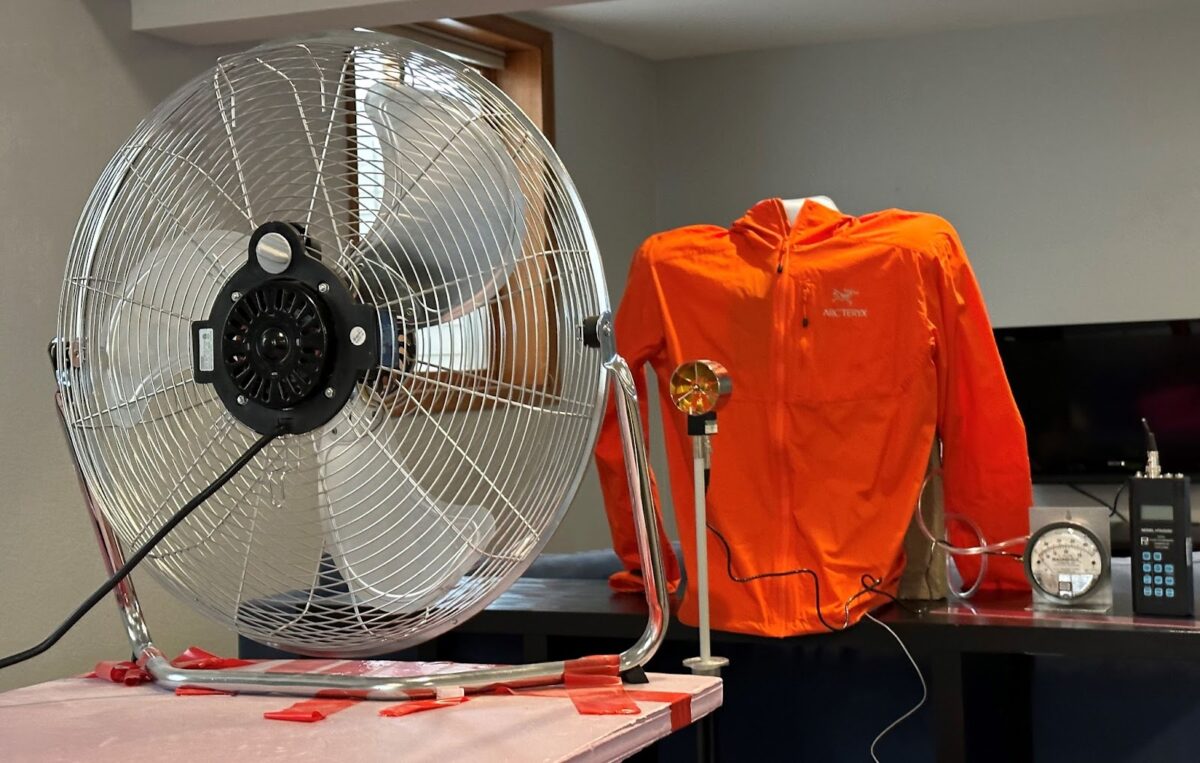Measurements of fabric performance are helpful only if they can predict field results. As we will learn in this article, Air Permeability Measurements (APM) do not replicate the forces at play when wearing a garment. If one of your objectives in selecting a windshirt is eliminating moisture vapor, your selection should rely more heavily on Moisture Vapor Transmission Rate (MVTR) than Air Permeability Measurements.
In August 2021, I published an article investigating whether a jacket’s Air Permeability Measurement or Moisture Vapor Transmission Rate was more critical for removing moisture vapor produced by a user. In that article, I concluded that MVTR was responsible for removing seven times more moisture than APM for the garments tested. MVTR testing can provide a more useful prediction of comfort in the field than APM.
Unsurprisingly, my conclusions concerning MVTR have been met with some skepticism. The ability of APM in windshirts to remove moisture during high-level activities has received extensive discussion in both the Backpacking Light community and the outdoor clothing industry for years. These discussions can be misleading and reflect a misunderstanding of the forces at play for removing moisture vapor from a garment. Part of the problem is that none of those discussions included measurements of MVTR, so no one could say what was responsible for performance in the field.
In this article, I am going to revisit this issue. I will provide data from my tests demonstrating the forces pushing water vapor from jackets. I will show how these forces work with market-leading windshirts. I will also describe the findings from other researchers who have studied this issue. Critically, I will demonstrate how aerodynamic forces limit air penetration of windshirts.
Here is what we will see:
- Elevated wind speed provides the force to drive air through an air-permeable garment and remove moisture vapor. When wind contacts an obstruction, such as a hiker in a windshirt, the airspeed at the contact point drops dramatically due to airflow stagnation and diversion. Consequently, much of the force that could drive outside air through a garment is lost. Standard air permeability measurements do not reflect this behavior.
- Compared to air blowing onto bare skin, any windshirt dramatically reduces the volume of moving air that can remove water vapor. In the absence of high winds, a typical windshirt allows almost negligible penetration of ambient air. Moreover, the limited volume of air that makes it through a windshirt can only remove vapor after following a tortuous circuit through inner layers and then back out of the windshirt. Standard air permeability measurements do not capture this difficult journey.
- The force produced by vapor pressure differences from a hiker’s skin to the environment can be many times the force available from wind-related pressure on a windshirt. High vapor pressure difference helps to account for the magnitude of vapor reduction due to MVTR vs. APM described in my 2021 article.
- Two studies that support my conclusions will be briefly described later in this article.
Member Exclusive
A Premium or Unlimited Membership* is required to view the rest of this article.
* A Basic Membership is required to view Member Q&A events




Home › Forums › By the Numbers: The Myth of Air Permeability in Windshirts